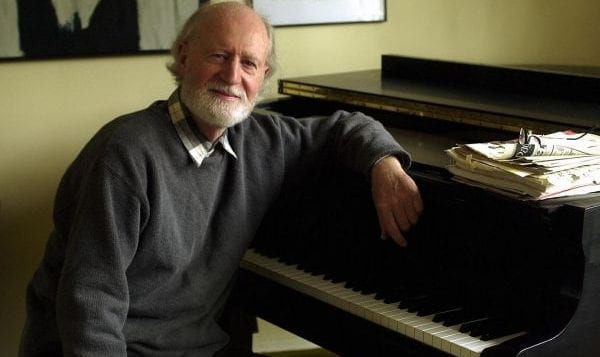By Daniel Dunaief
If eating macaroni and cheese made Joe sick, he might conclude he was allergic to dairy. But he could just as easily have been allergic to the gluten in the macaroni, rendering the dairy-free diet unnecessary.
Scientists try to connect two events, linking the presence of a protein, the appearance of a mutation or the change in the metabolic activity of a cell with a disease. That research often leads to targeted efforts to block or prevent that protein. Sometimes, however, that protein may not play as prominent a role as originally suspected. That is what happened with a gene called MELK, which is present in many types of cancer cells. Researchers concluded that the high level of MELK contributed to cancer.
Jason Sheltzer, a fellow at Cold Spring Harbor Laboratory, and Ann Lin and Christopher Giuliano, undergraduates at Stony Brook University who work in Sheltzer’s lab, proved that wasn’t the case. By rendering MELK nonfunctional, Sheltzer and his team expected to block cancer. When they knocked out MELK, however, they didn’t change anything about the cancer, despite the damage to the gene. But, Sheltzer wondered, might there be some link between MELK and cancer that he was missing? After all, scientists had found a drug called OTS167 that was believed to block MELK function.
To test this drug’s importance for MELK and cancer, Sheltzer used this drug on cancer cells that didn’t have a functioning MELK gene or protein. Even without MELK, the drug “killed cancer cells,” regardless of the disappearance of a gene that researchers believed was important for cancer’s survival, he said.
“We showed for the first time that [the drug] was killing cells that didn’t express MELK,” Sheltzer said. The drug had to have another, unknown target.
Sheltzer suggested that this is the first time someone had used CRISPR, a gene-editing technique, to take a “deep dive” into what a drug is targeting. This drug, he said, has a different mechanism of action from the one most people believed.
Sheltzer, whose work was published in early February in eLife, expanded the research from a petri dish, where researchers grow and study cells, to mouse models, which are often more similar to the kinds of conditions in human cancers. In those experiments, he found no difference between the tumors that grew with a MELK gene and those that didn’t have the MELK protein, continuing to confirm the original conclusion. “The tumors that formed in cells that had MELK and the tumors that formed in cells that didn’t have MELK were the same size,” he said.
Originally, Sheltzer believed the MELK protein might be involved in chemotherapy resistance. His lab found, however, that no matter what they did to MELK in these cells, the cancer appeared indifferent. Other researchers suggested that Sheltzer’s work would be instructive in a broader way for scientists.
Sheltzer’s research on MELK “will motivate a new set of standards for target discovery and validation in the field going forward,” Christopher Vakoc, an associate professor at CSHL, explained in an email. Sheltzer “brings a rigorous approach to cancer research and an impressive courage to challenge prevailing paradigms.” Sheltzer’s work highlights the challenge of understanding the mechanism of action of new medicines, Vakoc added.
Sheltzer plans to explore several other genes in which a high concentration of a specific protein coded by that gene correlates with a poor prognosis.
Using CRISPR, Sheltzer believes his lab can get precise information about drug targets and their effect on cancer. He’s also tracing a number of other types of cancer drugs that he thinks might have compelling properties and will use CRISPR to study the action of these drugs. “We want to know not just that a drug kills cancer cells: We want to know how and why,” he said.
By figuring out what a drug targets, he might be able to identify the patients who are most likely to respond to a particular drug. So far, the finding that a drug doesn’t work by interfering with a specific gene, in this case MELK, has been easier than finding the gene that is the effective target, he explained.
One of Sheltzer’s goals is to search for a cancer cell that is resistant to the drug, so that he can compare the genes of the vulnerable one with those of the cell that’s harder to treat. Detecting the difference in the resistant cell can enable him to localize the region critical for a drug’s success.
Sheltzer said finding that MELK was not involved in a cancer’s effectiveness was initially “depressing” because researchers believed they had found a cancer target. “We hope that by publishing these techniques and walking through the experiments in the paper that other labs can learn from this and can use some of the approaches we used to improve their drug discovery pipelines,” he said.
Sheltzer is pleased that Lin and Giuliano made such important contributions to this paper. CRISPR has made it possible for these undergraduates to “make these really important discoveries,” he said. Lin, who has worked in Sheltzer’s lab for two and a half years, was pleased. “It is very exciting to share my knowledge of MELK in regards to its role in cancer biology,” she wrote in an email. “Authoring a paper requires a great deal of work and I am super thrilled” to see it published.
Sheltzer, who lives with his partner Joan Smith, who is a software engineer at Google, said he was interested in science during his formative years growing up in Wayne, Pennsylvania, which is just outside of Philadelphia, and appreciates the position he has at Cold Spring Harbor Laboratory. Soon after earning his doctorate at MIT, Sheltzer set up his own lab, rather than conducting research for several years as a postdoctoral researcher. “I was really fortunate to be given that opportunity,” he said.
As for his work with MELK, Sheltzer hopes he’s saved other labs from pursuing clinical dead ends.





























